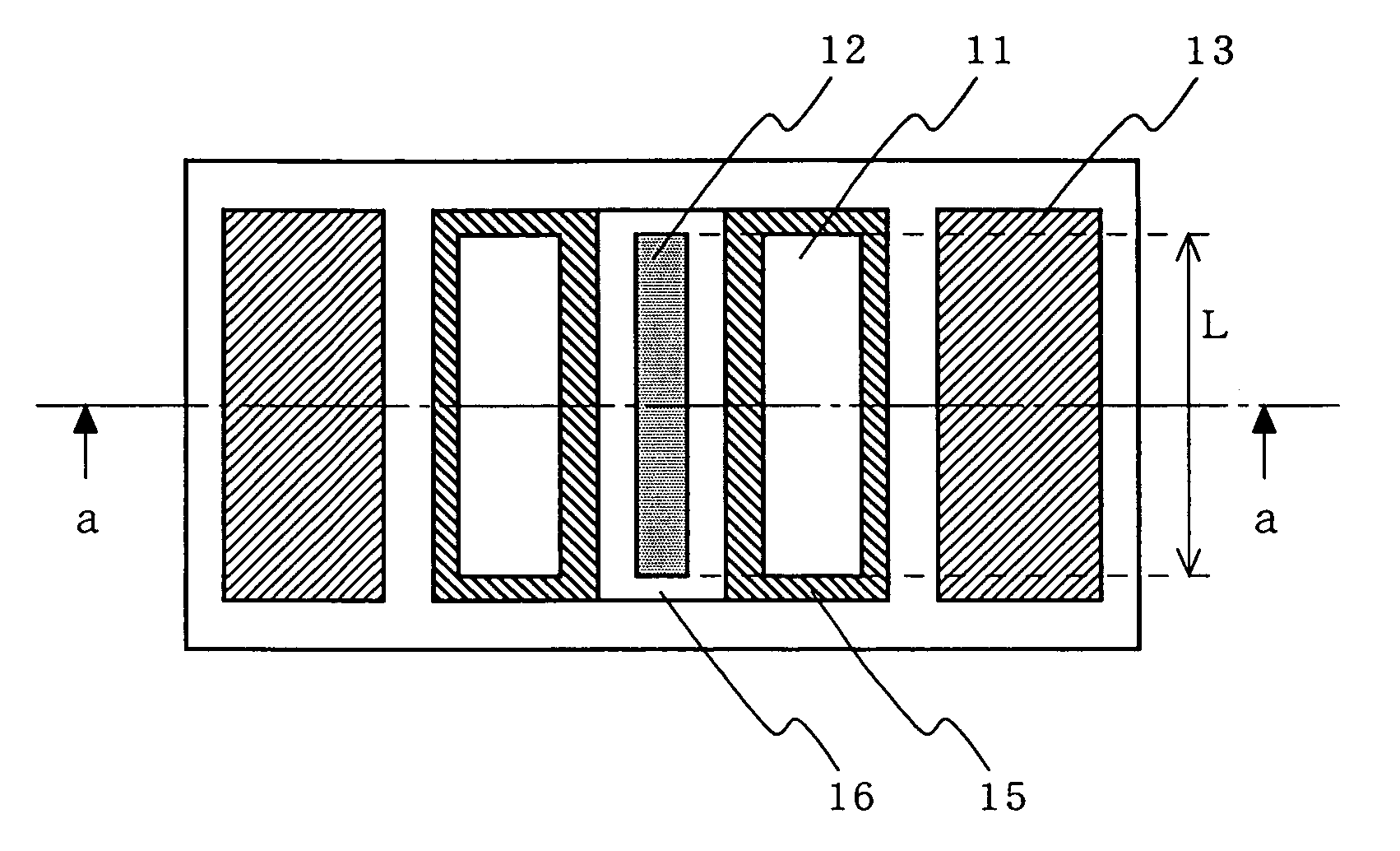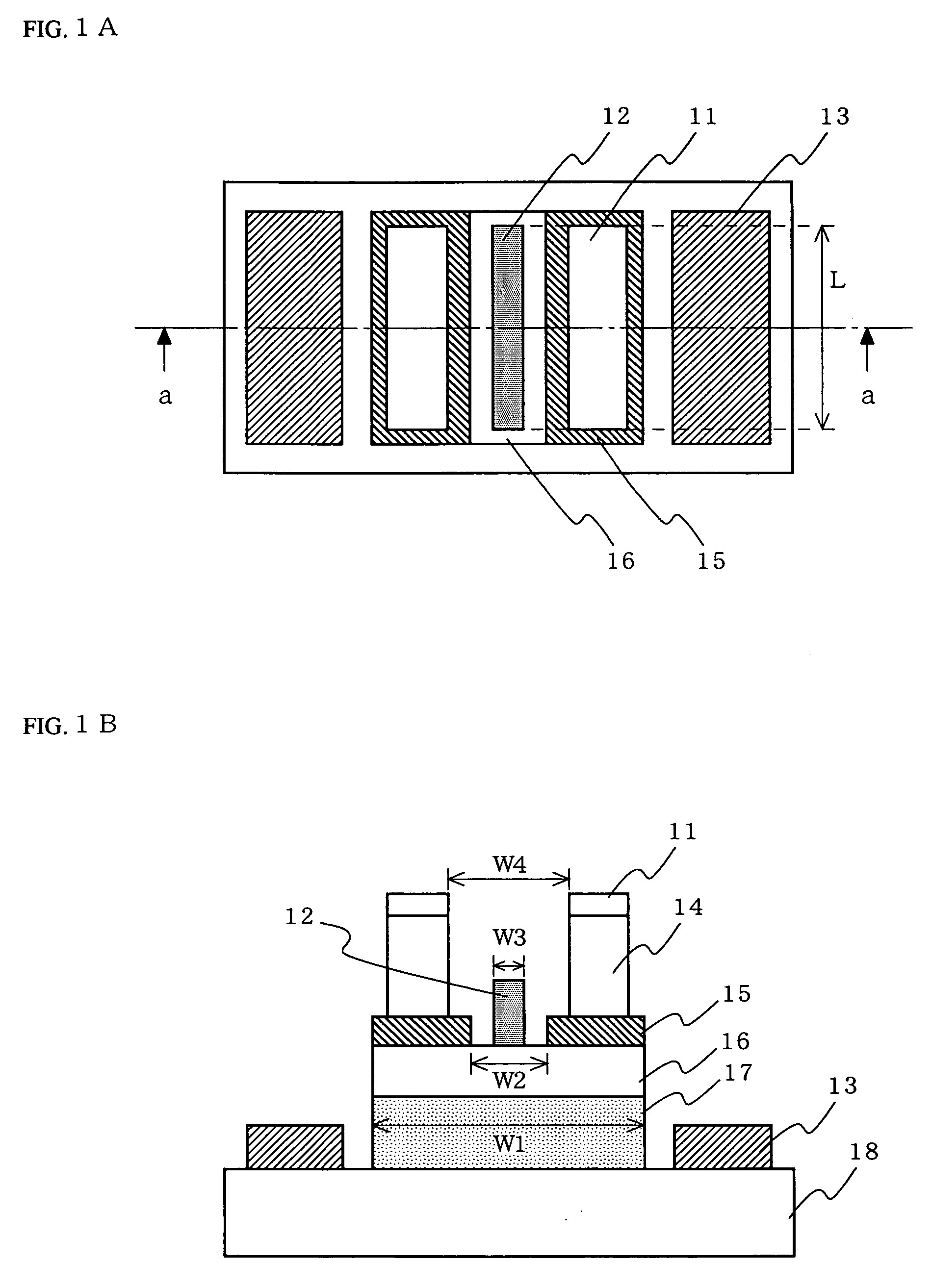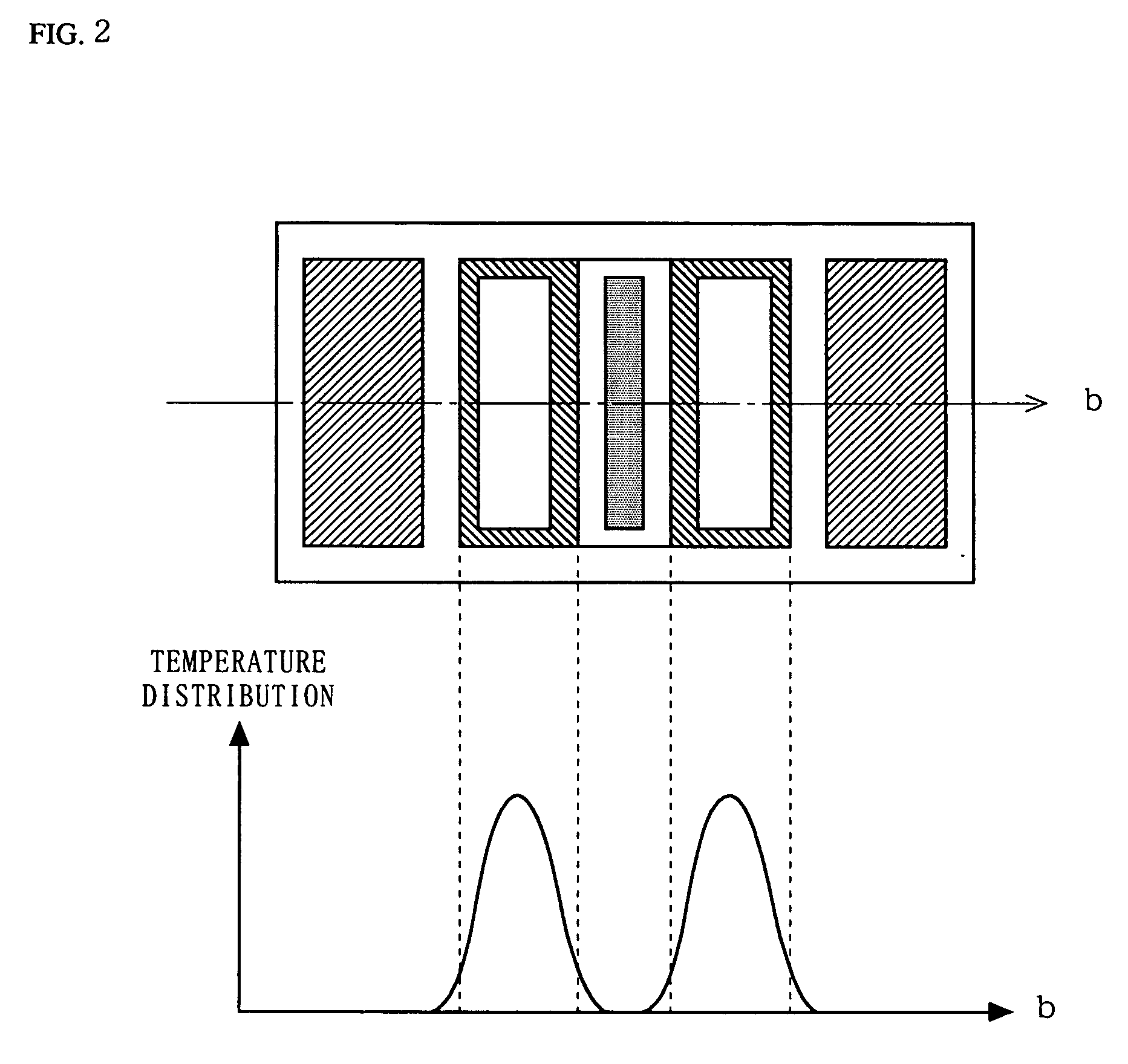Bipolar transistor and power amplifier
a power amplifier and bipolar transistor technology, applied in the field of bipolar transistors and power amplifiers, can solve the problems of deterioration of radio frequency characteristics, failure of hbt cell operation, and occupying the emitter finger of a semiconductor chip, so as to reduce the chip area, improve the gain characteristics of a radio frequency band, and uniform heat generation
- Summary
- Abstract
- Description
- Claims
- Application Information
AI Technical Summary
Benefits of technology
Problems solved by technology
Method used
Image
Examples
Embodiment Construction
[0042] (Structure of Bipolar Transistor)
[0043] Initially, a structure of a bipolar transistor according to an embodiment of the present invention will be described.
[0044]FIG. 1A is a plan view illustrating the structure of the bipolar transistor according to the embodiment of the present invention. FIG. 1B is a cross-sectional view illustrating the bipolar transistor, taken along line a—a in FIG. 1A. In the structure of the bipolar transistor of this embodiment, a base mesa finger (an emitter ledge layer 15, a base layer 16, and a collector layer 17) is interposed between two collector fingers (collector electrodes 13), and one base finger (a base electrode 12) and two emitter fingers (an emitter layer 14 and an emitter electrode 11) on both sides of the base finger, are formed on the base mesa finger. The two emitter fingers are formed at locations symmetric with respect to the base finger as a reference. This bipolar transistor is typically a heterojunction bipolar transistor (H...
PUM
 Login to View More
Login to View More Abstract
Description
Claims
Application Information
 Login to View More
Login to View More - R&D
- Intellectual Property
- Life Sciences
- Materials
- Tech Scout
- Unparalleled Data Quality
- Higher Quality Content
- 60% Fewer Hallucinations
Browse by: Latest US Patents, China's latest patents, Technical Efficacy Thesaurus, Application Domain, Technology Topic, Popular Technical Reports.
© 2025 PatSnap. All rights reserved.Legal|Privacy policy|Modern Slavery Act Transparency Statement|Sitemap|About US| Contact US: help@patsnap.com



